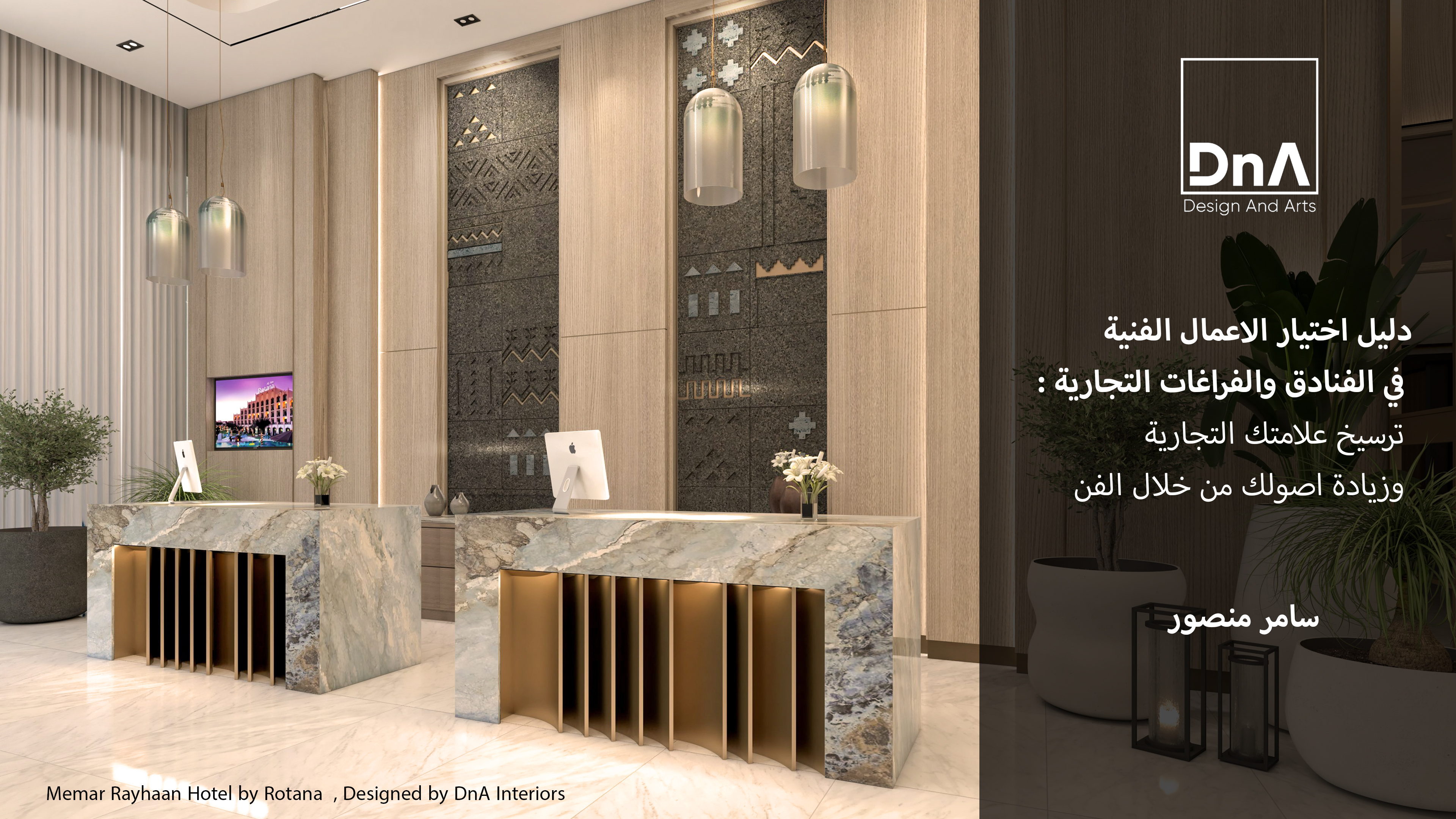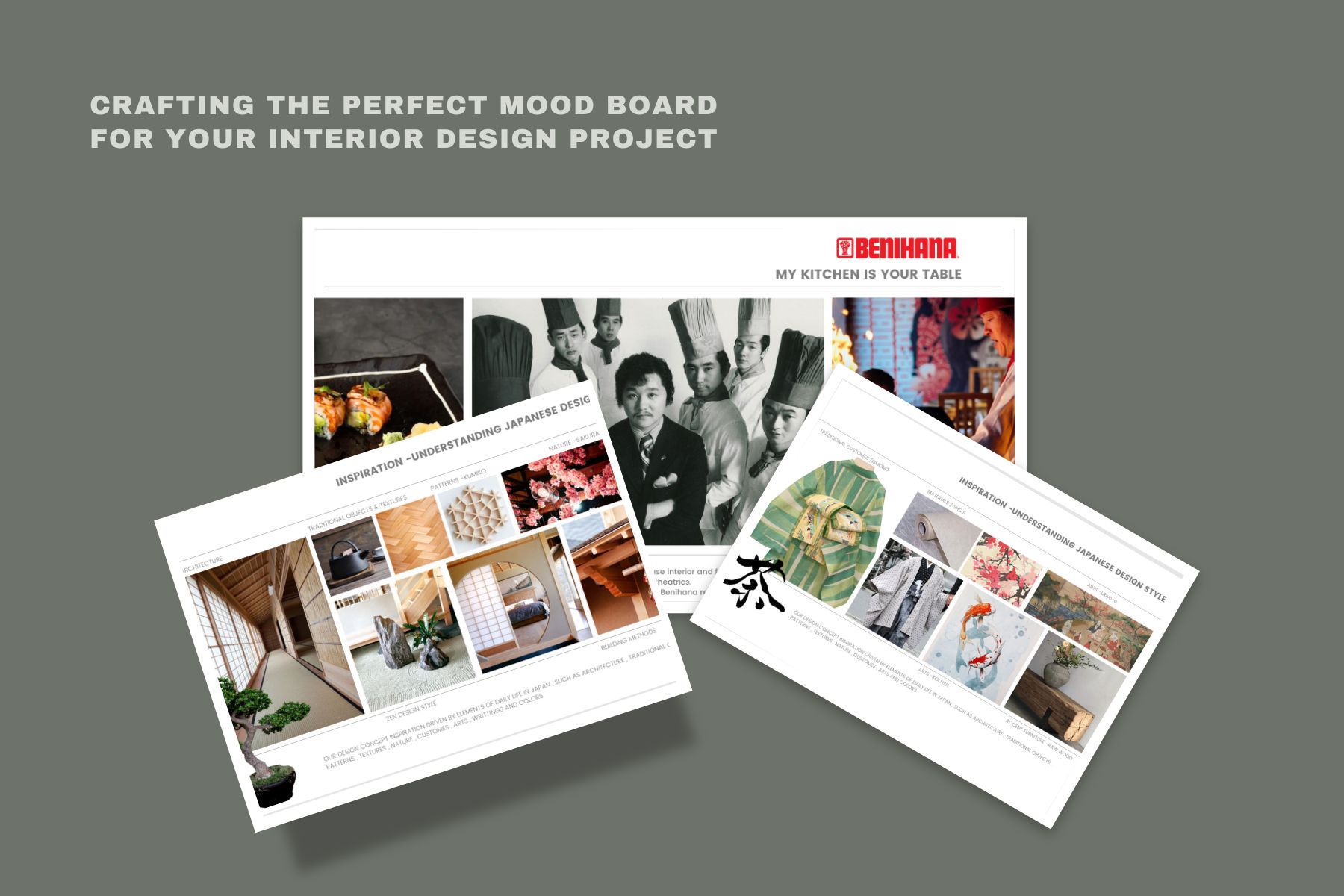Categories: DnA Interiors
The term “mood board” is widely used, but you might also hear it referred to as a “look and feel board” or an “inspiration board.” Regardless of the name, the purpose remains the same: to visually communicate the essence of your project.
Creating a mood board is an essential step in the design process, whether you’re working on an interior design project, branding, or any other creative endeavor. A mood board serves as a visual tool to convey the atmosphere, style, and overall vibe of a project. Let’s dive into the key aspects of creating an effective mood board.
1. Proficient sources
Selecting the right sources is crucial for creating a mood board that accurately reflects your vision. For instance, if you’re designing a hotel, look at examples from leading brands in the hospitality industry rather than residential real estate projects. This ensures that the design elements you choose share the same visual language and are relevant to your project.
2. Design Philosophy & Creative Storytelling
Starting your mood board with a well-articulated design philosophy and context is crucial. This initial explanation sets the tone for the entire presentation, making subsequent slides either relevant or irrelevant. Carefully select your words to establish the right tone and provide a clear context for your audience.
Your mood board should tell a story inspired by heritage, client branding elements, or the geographical surroundings of your project. This narrative approach helps to create a cohesive and compelling vision that resonates with your client.
3. Comprehensive Area Coverage & Sequential Journey
Ensure your mood board covers all areas of the project. This comprehensive approach makes it easier for your client to visualize the entire space, leading to quicker approvals and allowing you to proceed with schematic design confidently.
Organize your mood board in a logical sequence, taking your client on a journey through the project. Include general layouts and detailed blow-ups to clearly understand each area.
4. FF&E & Finishes Initial Selection
Furniture selection is mandatory to create a full journey for your client. It helps in visualizing the functionality and aesthetics of the space, ensuring that every piece fits perfectly within the overall design.
Including a finishes slide is also fundamental to understanding how colors and different finishes work together. This helps in visualizing the harmony and contrast within the space.
5. Plants , Artwork and Accessories
Incorporate artwork Direction and accessories as complementary elements. These details help both you and your client understand the space better and add depth to your design.
Plants and greenery are essential parts of our lives, so make them part of your presentation. They add a touch of nature and freshness, enhancing the overall ambiance of the space.
6. Mood and Ambiance
A mood board can do more than just show the visual aspects of a space; it can also convey sensory experiences like smell and touch. For example, if you’re designing a bridal suite, you might include images of oriental incense smoke to evoke a sense of luxury and tradition, or a bride’s white dress to symbolize joy and celebration.
7. Appealing graphics
Don’t underestimate the power of good graphics. The fonts, font sizes, and overall appeal of your presentation can significantly impact how your mood board is received. A well-designed mood board is not only informative but also visually engaging.
8. Client Branding
Don’t miss the opportunity to communicate with the client through their branding devices, colors, and business language. This personal touch ensures that the design aligns with the client’s identity and values.
9. Commitment to the Mood Board
Once your mood board is approved, it becomes your work plan. Treat it as your compass throughout the project. While the final design will evolve, the mood board provides a solid foundation that guides your creative process.
And remember, your final design won’t be a mere copy of the elements on your mood board. As you progress, your personality, client preferences, and the nature of the space will lead you to a unique and refined outcome.
By following these guidelines, you can create a mood board that not only captures the essence of your project but also serves as a powerful tool for communication and inspiration. Happy designing!
Sharing is caring:
Categories:
Recent Posts:
-
 دليل اختيار الأعمال الفنية في الفنادق والفراغات التجارية
دليل اختيار الأعمال الفنية في الفنادق والفراغات التجاريةهذه المقالة موجهة لمطوري الفنادق على نحو خاص...
-
 Crafting the Perfect Mood Board: A Comprehensive Guide
Crafting the Perfect Mood Board: A Comprehensive GuideCreating a mood board is an essential step in...
-
 Five Key Challenges in the Commencement of Your fit out Hospitality Project
Five Key Challenges in the Commencement of Your fit out Hospitality ProjectIn the dynamic world of project management, e...